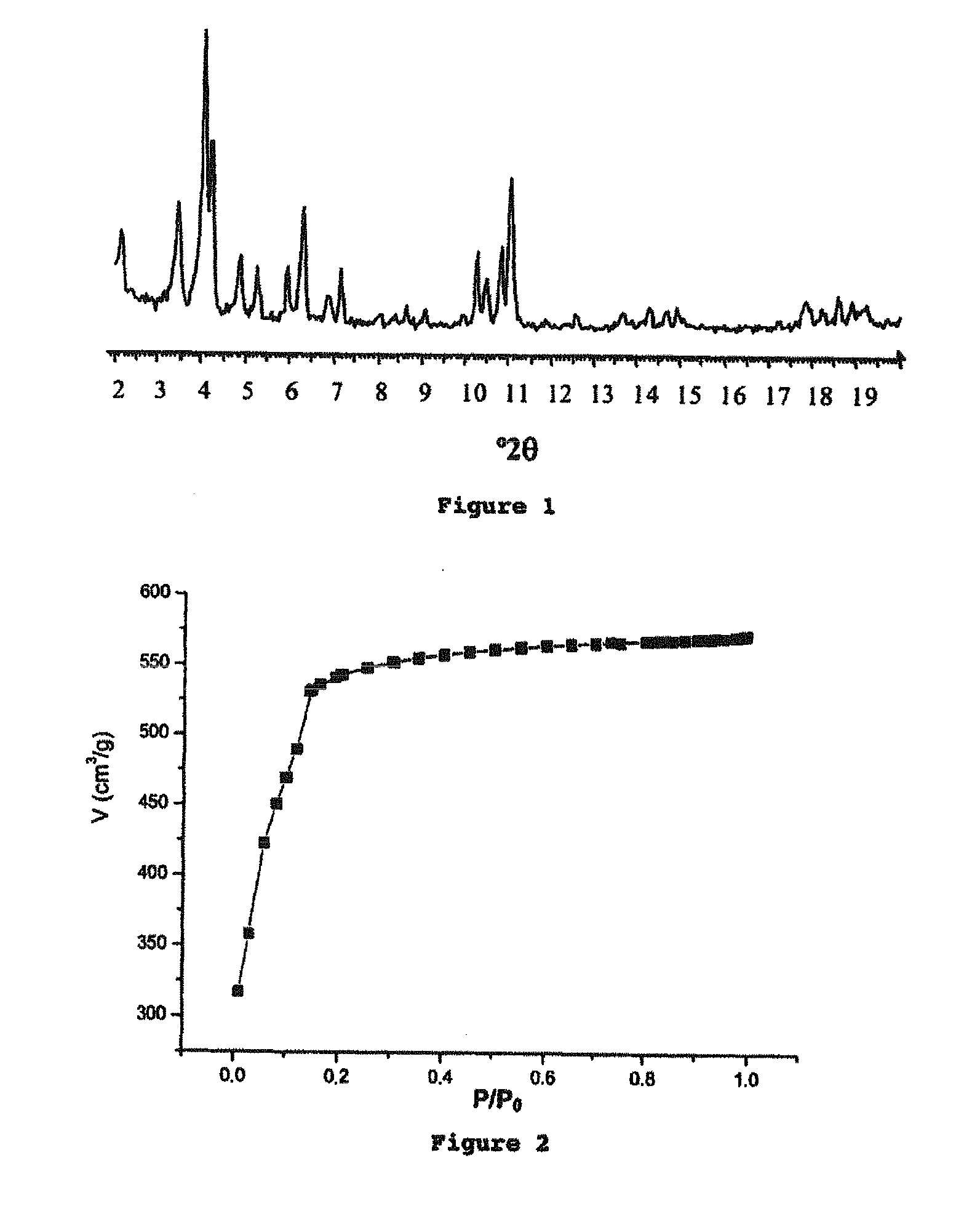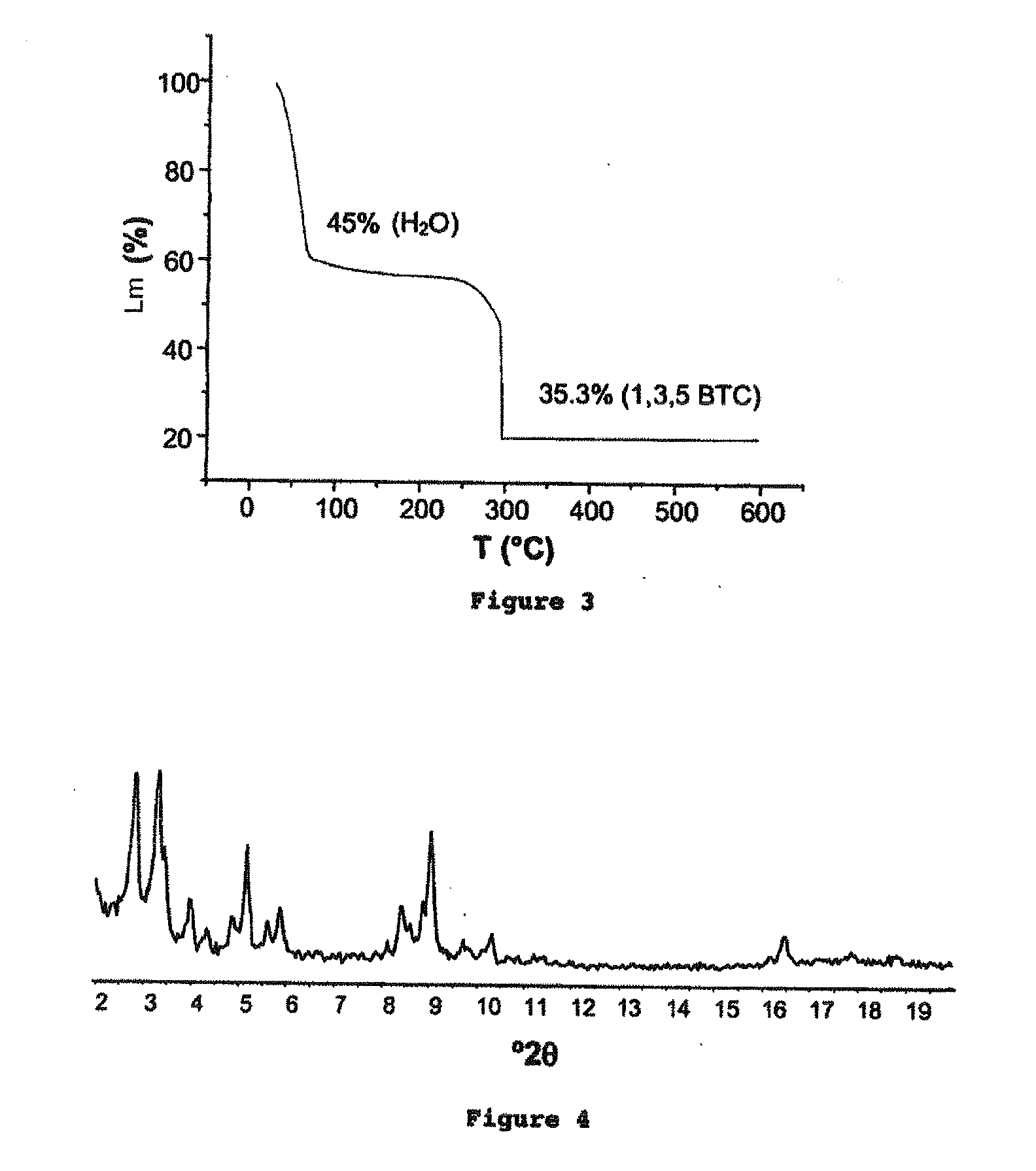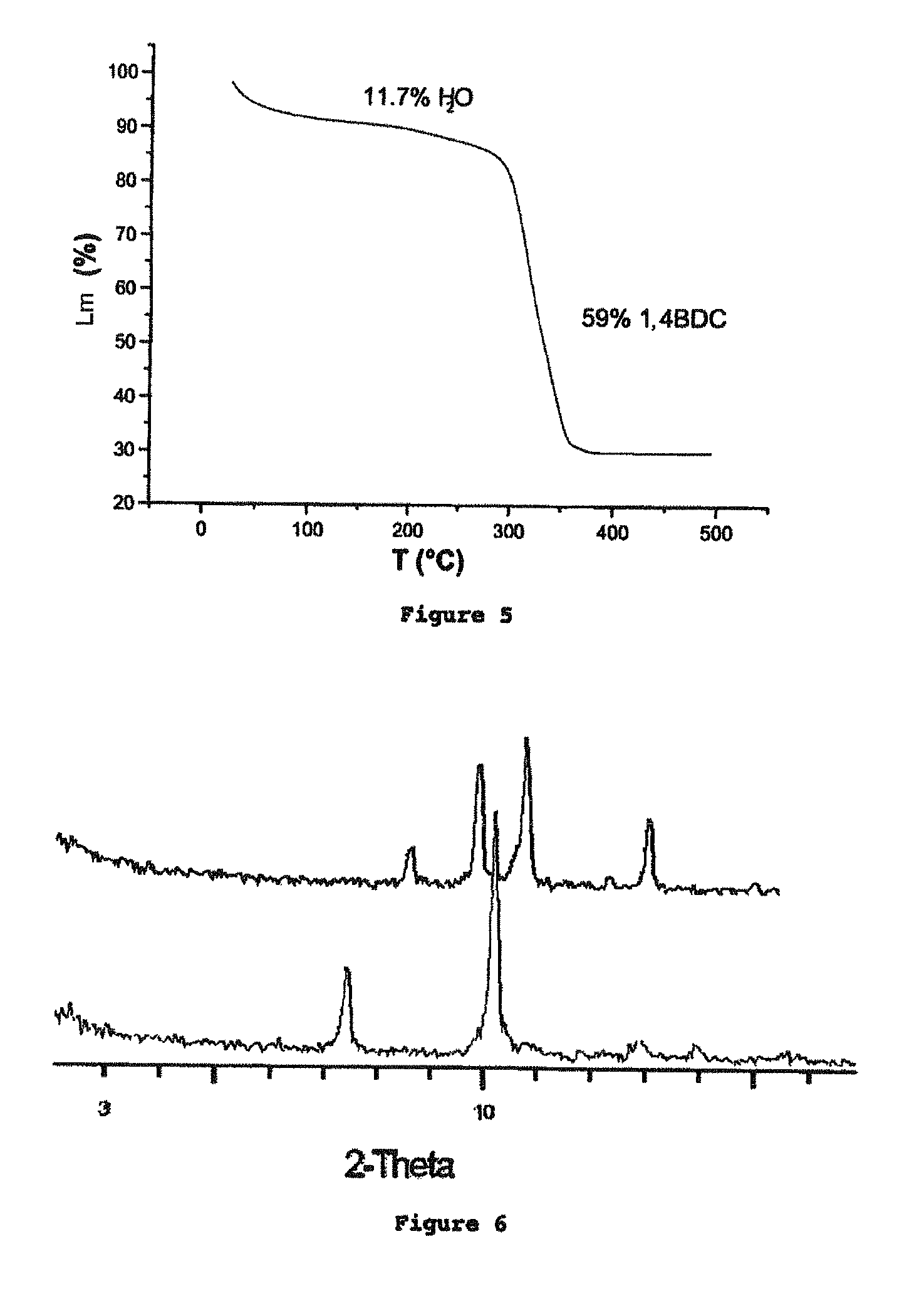Porous crystalline hybrid solid for adsorbing and releasing gas of biological interest
a technology of porous crystalline and hybrid solids, which is applied in the direction of organic compounds/hydrides/coordination complexes catalysts, physical/chemical process catalysts, extracellular fluid disorders, etc., can solve the problems of large vasodilation, inability to deliver no in gas form from gas bottles, and limited applicability
- Summary
- Abstract
- Description
- Claims
- Application Information
AI Technical Summary
Benefits of technology
Problems solved by technology
Method used
Image
Examples
example 1
Synthesis of and Data on the Iron Carboxylates of the Present Invention
[0334]This example describes the synthesis of various iron carboxylates. The solids obtained were subsequently characterized according to the methods described below.
[0335]The analysis of the crystal structure of the iron carboxylate solids was carried out by X-ray (XR) diffraction using a Siemens D5000 diffractometer (radiation CuKαλCu=1.5406 Å, mode θ-2θ), at ambient temperature in air. The diagrams are represented either in angular distances (2θ, in degrees °) or in interreticular distances (d, in Å or Angstrom).
[0336]The characterization of the porosity (Langmuir specific surface area and pore volume) of the solids was measured by the nitrogen adsorption at 77 K with a Micromeretics ASAP-2010 instrument. The solids were dehydrated beforehand at 150° C. under a primary vacuum overnight. The isotherm for nitrogen adsorption by the solids is given by a curve representing the volume of nitrogen adsorbed V (in cm3...
example 2
Synthesis of Iron(III) Acetate
[0482]The iron(III) acetate, used in the examples below for synthesizing the MOF materials according to the invention, is synthesized according to the following protocol. For this synthesis, reference may be made to the publication by Dziobkowski et al., Inorg. Chem., 1982, 21, 671 [ref. 14].
[0483]6.72 g of iron metal powder (Riedel-de-Haen, 99%), 64 ml of deionized water and 33.6 ml of perchloric acid at 70% in water (Riedel-de-Haen) are mixed with magnetic stirring and heated at 50° C. for 3 hours. After the heating has been stopped, the solution is stirred for 12 hours. The residual iron metal is eliminated by settling out, followed by a change of vessel. 20.6 ml of hydrogen peroxide solution in water (sold by the company Alfa Aesar, 35%) are added dropwise with stirring, the whole mixture being kept in an ice bath at 0° C. 19.7 g of sodium acetate (Aldrich, 99%) are added to the blue solution with stirring, while keeping the solution at 0-5° C. The ...
example 3
Synthesis of the Ligands
a) Synthesis A: Synthesis of Chloroterephthalic Acid
[0484]6 g (0.043 mol) of chloroxylene (sold by the company Aldrich, >99%), 16 ml of nitric acid (sold by the company VWR, 70%) and 60 ml of distilled water are introduced into a 120 ml Teflon body. The latter is placed in a Paar metal bomb, and heated at 170° C. for 12 hours. The product is recovered by filtration, and then washed thoroughly with distilled water. A yield of 75% is obtained.
[0485]1H NMR (300 MHz, d6-DMSO): δ (ppm): 7.86 (d, J=7.8 Hz), 7.93 (dd, J=7.8; 1.2 Hz), 7.96 (d, J=1.2 Hz).
b) Synthesis B: synthesis of 3,5,3′,5′-tetramethylbiphenyl-4,4′-dicarboxylic acid
[0486]The reaction scheme for this synthesis is represented in FIG. 43.
Stage 1:
[0487]10.2 g of tetramethylbenzidine (98%, Alfa Aesar) are suspended in 39 ml of concentrated hydrochloric acid (37%, sold by the company Aldrich) at 0° C. The diazotization is carried out by adding a solution of sodium nitrite (6 g in 50 ml of water). After st...
PUM
| Property | Measurement | Unit |
|---|---|---|
| Temperature | aaaaa | aaaaa |
| Temperature | aaaaa | aaaaa |
| Temperature | aaaaa | aaaaa |
Abstract
Description
Claims
Application Information
 Login to View More
Login to View More - R&D
- Intellectual Property
- Life Sciences
- Materials
- Tech Scout
- Unparalleled Data Quality
- Higher Quality Content
- 60% Fewer Hallucinations
Browse by: Latest US Patents, China's latest patents, Technical Efficacy Thesaurus, Application Domain, Technology Topic, Popular Technical Reports.
© 2025 PatSnap. All rights reserved.Legal|Privacy policy|Modern Slavery Act Transparency Statement|Sitemap|About US| Contact US: help@patsnap.com



